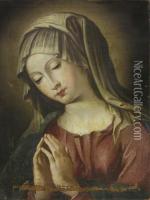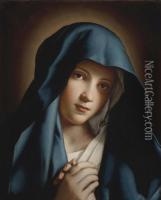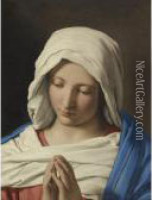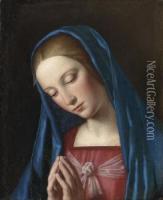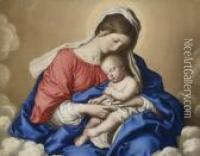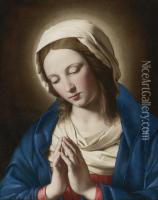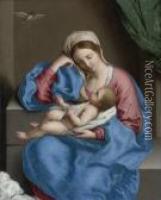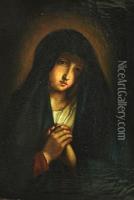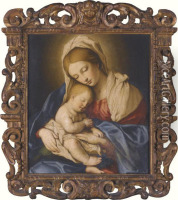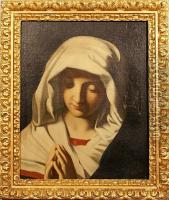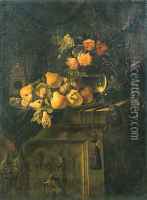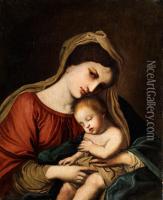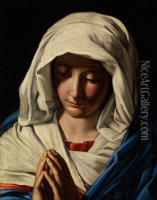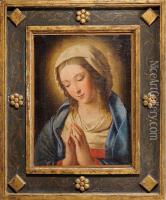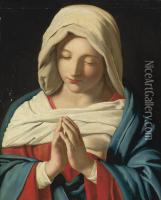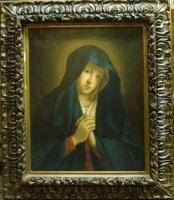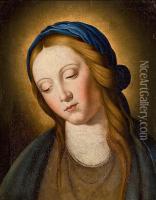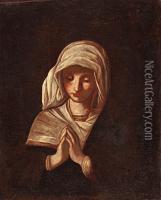Giovanni Battista Salvi Paintings
Giovanni Battista Salvi, also known as Sassoferrato from his place of birth, was an Italian Baroque painter renowned for his devotional subjects and a style emphasizing piety and simplicity. Born in 1609 in the small town of Sassoferrato in the Marche region of Italy, his artistic training is not well documented, but it is believed he may have studied under his father, Tarquinio Salvi, who was a minor painter, and possibly with Domenichino in Rome.
Sassoferrato's work, characterized by its clear composition and the soft, sweet faces of his figures, reflects an influence from the Bolognese School and artists such as Guido Reni and Raphael. His focus was primarily on religious themes, and he often painted the Virgin Mary, earning a reputation for his numerous and tender representations of the Madonna in prayer, known as the 'Madonna del Rosario' or the 'Madonna in contemplazione.'
Operating mostly in Rome, his patrons included members of the clergy and religious institutions who appreciated his devout approach to religious art. Despite living during a period that celebrated the dramatic intensity of the High Baroque, Sassoferrato's work is noted for its restraint and use of clear, harmonious colors that appealed to the Counter-Reformation's calls for decorum and clarity in religious art.
Sassoferrato's paintings were typically small in scale, intended for private devotion, and he rarely worked on large altar pieces. His delicate brushwork and attention to detail in rendering the textures of fabrics and the softness of flesh tones were admired during his lifetime and continue to be appreciated.
Giovanni Battista Salvi died in Rome in 1685. His works can be found in major museums around the world, such as the Louvre in Paris and the Vatican Museums. Sassoferrato's legacy lives on as a master of devotional Baroque painting, whose serene and contemplative images offer a counterpoint to the era's more theatrical and elaborate styles.
